Top Rankings
Cumberland Academy School District ranks among the top 20% of public school district in Texas for:
Category
Attribute
Graduation Rate
Highest graduation rate (Top 10%)
Diversity
Most diverse schools (Top 1%)
For the 2025 school year, there is 1 public preschool serving 432 students in Cumberland Academy School District. This district's average pre testing ranking is 2/10, which is in the bottom 50% of public pre schools in Texas.
Public Preschool in Cumberland Academy School District have an average math proficiency score of 24% (versus the Texas public pre school average of 43%), and reading proficiency score of 41% (versus the 53% statewide average).
Minority enrollment is 61% of the student body (majority Hispanic), which is less than the Texas public preschool average of 76% (majority Hispanic).
Overview
This School District
This State (TX)
# Schools
5 Schools
4,192 Schools
# Students
2,035 Students
2,151,418 Students
# Teachers
170 Teachers
147,942 Teachers
Student : Teacher Ratio
12:1
12:1
District Rank
Cumberland Academy School District, which is ranked #803 of all 1,196 school districts in Texas (based off of combined math and reading proficiency testing data) for the 2021-2022 school year.
The school district's graduation rate of 95% has increased from 90-94% over five school years.
Overall District Rank
#801 out of 1204 school districts
(Bottom 50%)
(Bottom 50%)
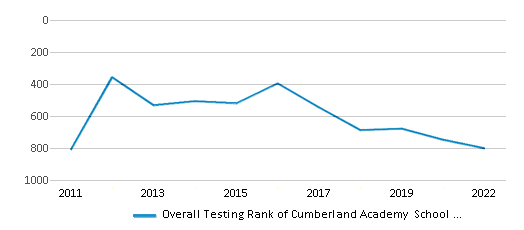
Math Test Scores (% Proficient)
31%
41%
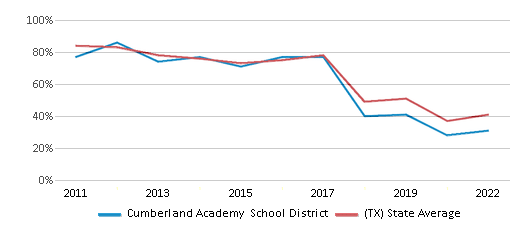
Reading/Language Arts Test Scores (% Proficient)
48%
51%
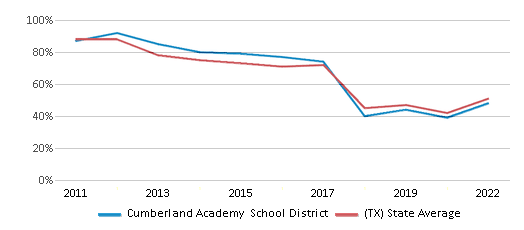
Science Test Scores (% Proficient)
43%
46%
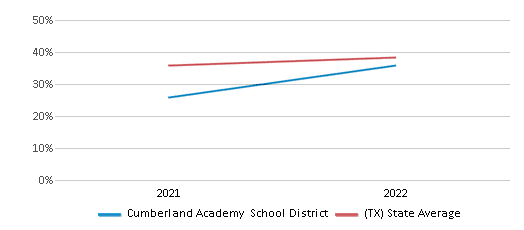
Graduation Rate
≥95%
90%
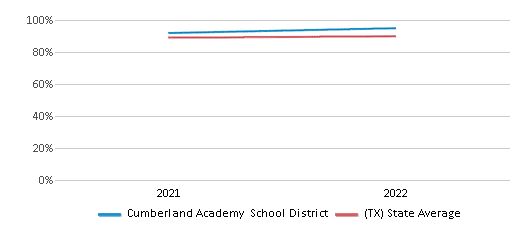
Students by Ethnicity:
Diversity Score
0.69
0.63
# American Indian Students
8 Students
6,302 Students
% American Indian Students
n/a
n/a
# Asian Students
75 Students
104,203 Students
% Asian Students
4%
5%
# Hispanic Students
561 Students
1,180,208 Students
% Hispanic Students
28%
55%
# Black Students
368 Students
275,255 Students
% Black Students
18%
13%
# White Students
927 Students
509,082 Students
% White Students
45%
24%
# Hawaiian Students
1 Student
3,291 Students
% Hawaiian Students
n/a
n/a
# Two or more races Students
95 Students
73,077 Students
% of Two or more races Students
5%
3%
Students by Grade:
# Students in PK Grade:
70
275,832
# Students in K Grade:
175
307,607
# Students in 1st Grade:
191
310,480
# Students in 2nd Grade:
168
317,113
# Students in 3rd Grade:
177
300,451
# Students in 4th Grade:
161
295,281
# Students in 5th Grade:
148
258,890
# Students in 6th Grade:
117
33,806
# Students in 7th Grade:
132
14,241
# Students in 8th Grade:
145
12,959
# Students in 9th Grade:
156
7,002
# Students in 10th Grade:
133
6,366
# Students in 11th Grade:
136
5,781
# Students in 12th Grade:
126
5,609
# Ungraded Students:
-
-
District Revenue and Spending
The revenue/student of $10,884 in this school district is less than the state median of $13,387. The school district revenue/student has stayed relatively flat over four school years.
The school district's spending/student of $7,431 is less than the state median of $14,116. The school district spending/student has stayed relatively flat over four school years.
Total Revenue
$22 MM
$74,029 MM
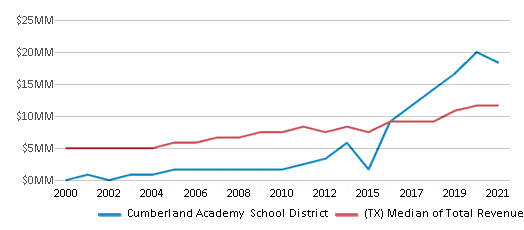
Spending
$15 MM
$78,063 MM
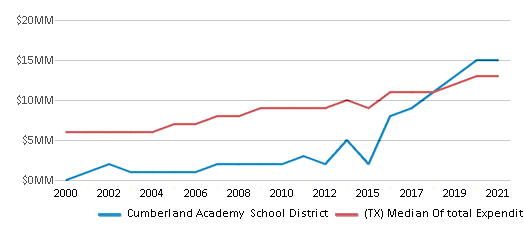
Revenue / Student
$10,884
$13,387

Spending / Student
$7,431
$14,116
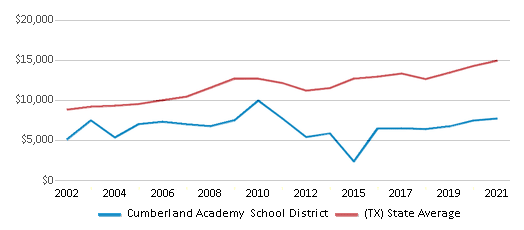
Best Cumberland Academy School District Public Preschools (2025)
School
(Math and Reading Proficiency)
(Math and Reading Proficiency)
Location
Grades
Students
Rank: #11.
Cumberland Academy Lower Elementary School
Charter School
(Math: 24% | Reading: 41%)
Rank:
Rank:
2/
Bottom 50%10
1340 Shiloh Rd
Tyler, TX 75703
(903) 405-1318
Tyler, TX 75703
(903) 405-1318
Grades: PK-2
| 432 students
Recent Articles

Year-Round Or Traditional Schedule?
Which is more appropriate for your child? A year-round attendance schedule or traditional schedule? We look at the pros and cons.

Why You Should Encourage Your Child to Join a Sports Team
Participating in team sports has a great many benefits for children, there is no doubt. In this article you will learn what those benefits are.

White Students are Now the Minority in U.S. Public Schools
Increasing birth rates among immigrant families from Asia and Central and South America, combined with lower birth rates among white families, means that for the first time in history, public school students in the United States are majority-minority. This shift in demographics poses difficulties for schools as they work to accommodate children of varying language abilities and socio-economic backgrounds.





